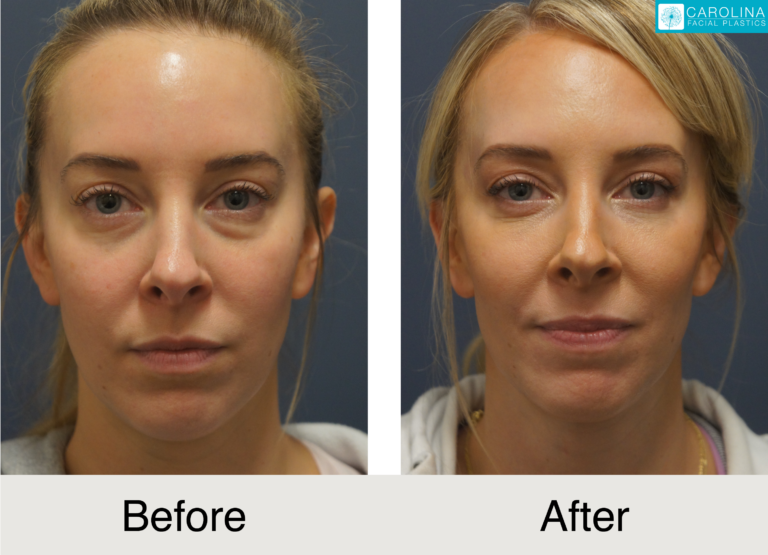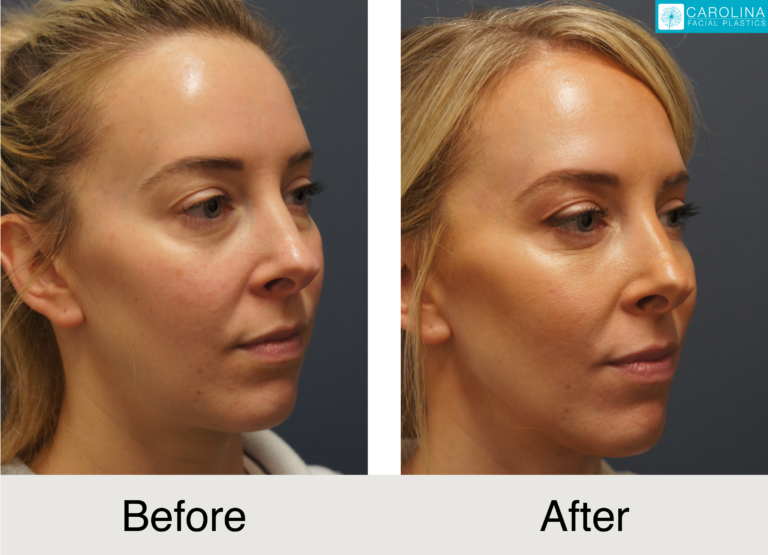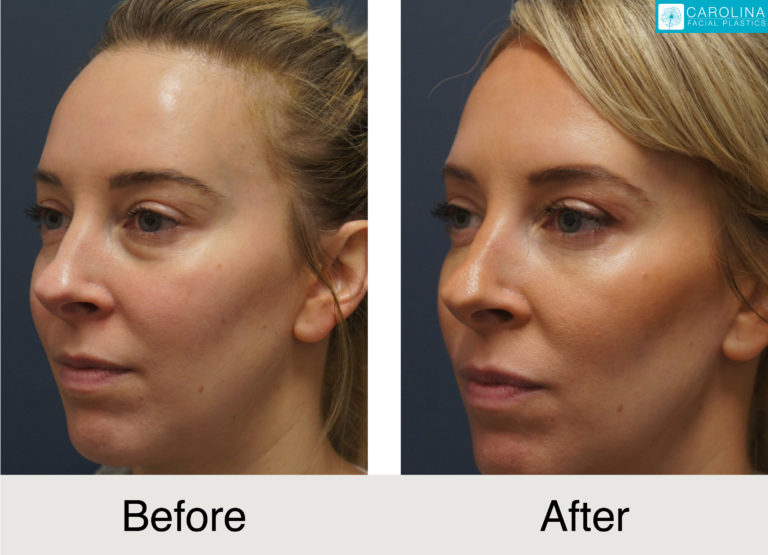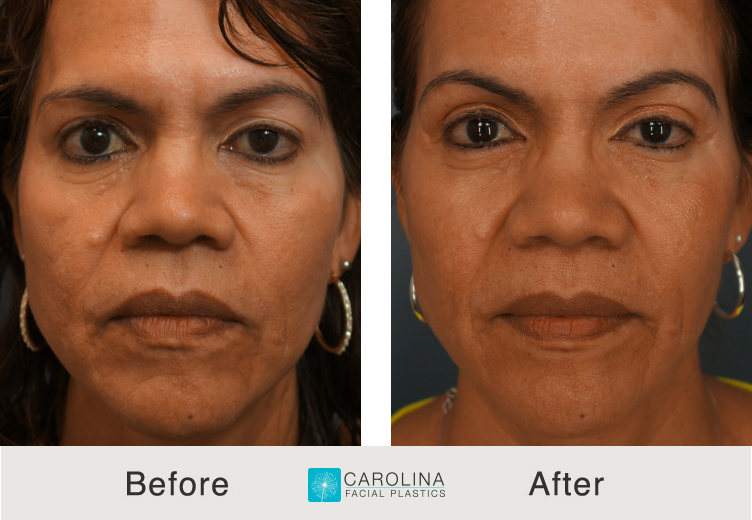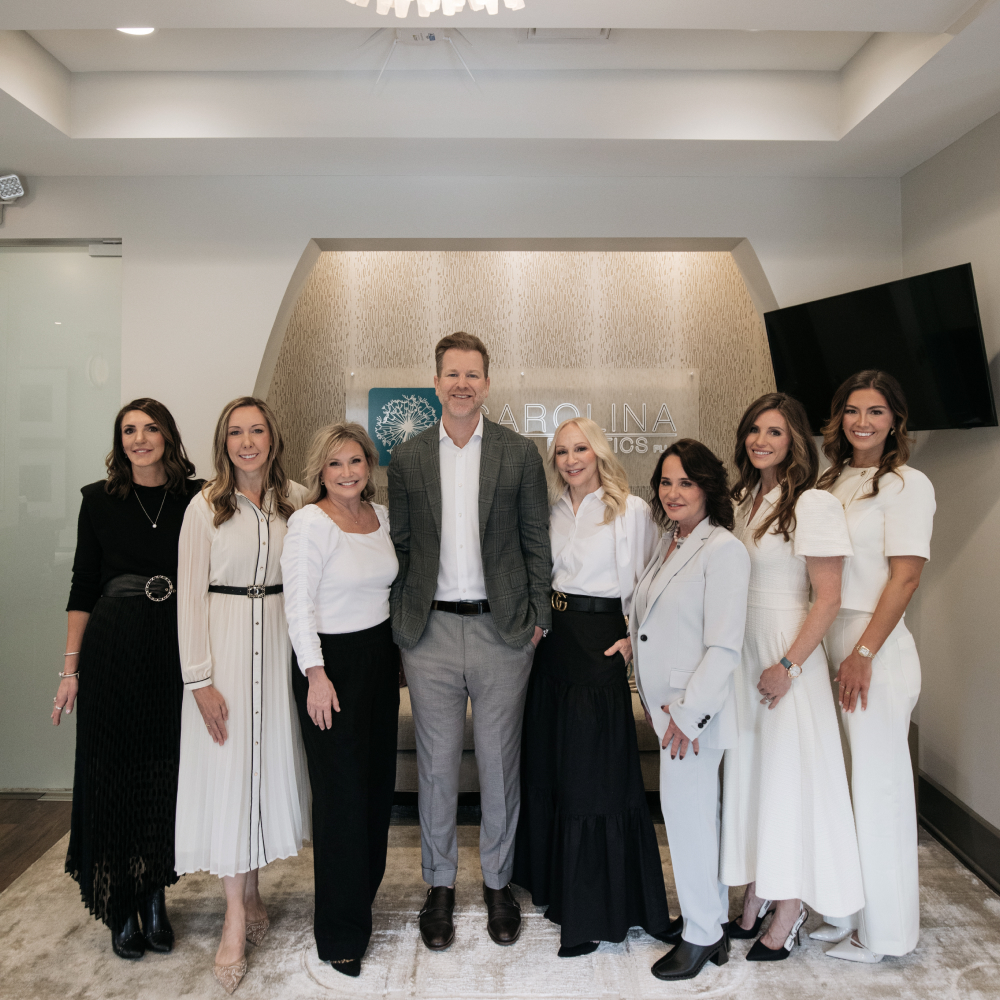Remove excess skin and fat from upper eyelids to restore a youthful, alert appearance
Eyelid & Forehead Surgery
Eyelid & Forehead Surgery
Raise, tighten, and rejuvenate your eyes and browline for a naturally rejuvenated appearance.
At Carolina Facial Plastics, we specialize in advanced eye and forehead procedures that deliver natural-looking, transformative results.
Led by double board-certified facial plastic surgeon Dr. Jonathan Kulbersh, our expertise in oculoplastic surgery—honed through specialized Beverly Hills training—ensures that your eyes remain the captivating focal point of your face while achieving a refreshed, youthful appearance.
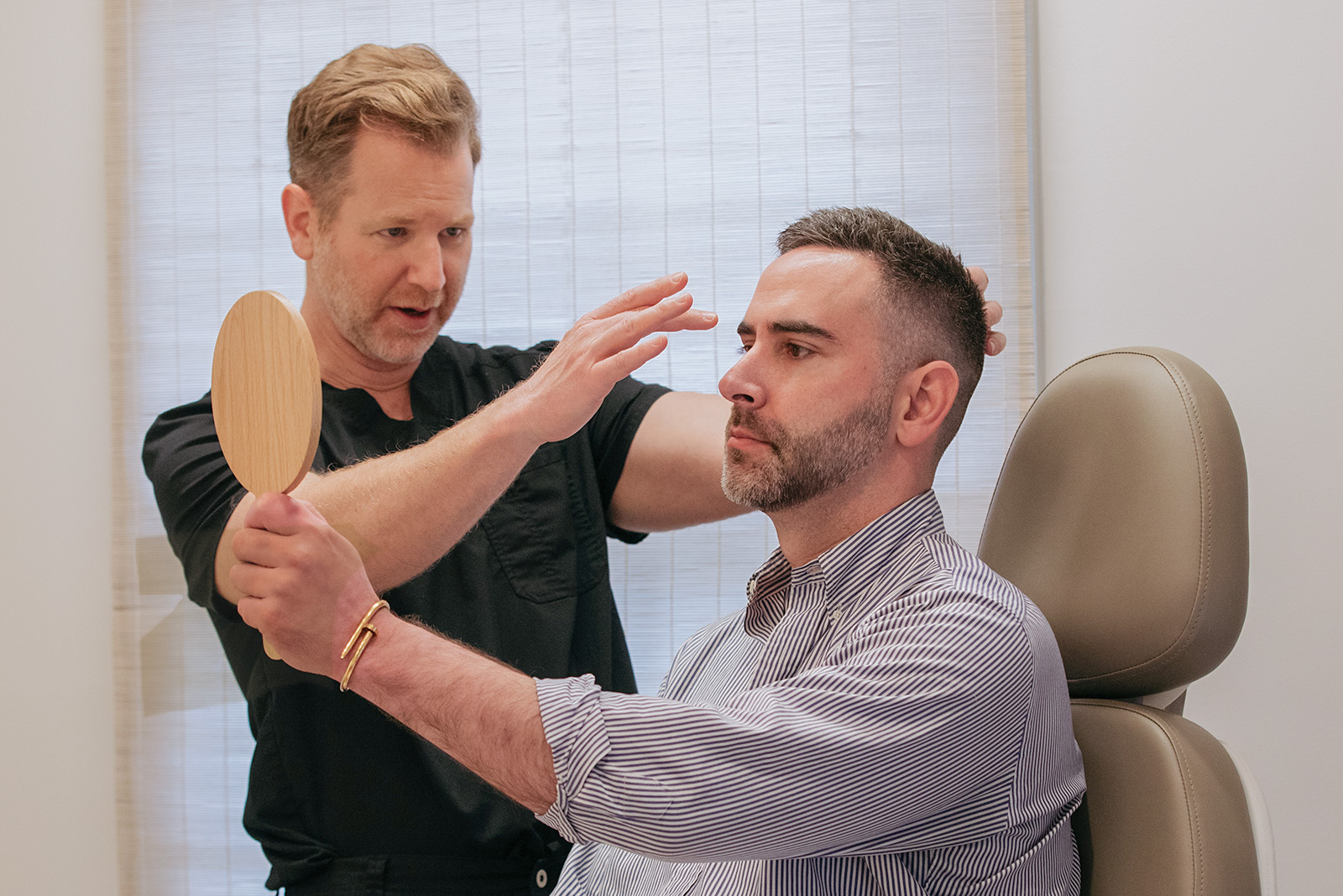
Surgical Procedures We Offer
Lower Blepharoplasty
Eliminate under-eye bags using advanced techniques, including fat removal with grafting or fat repositioning for optimal rejuvenation
Forehead & Brow Lift
Elevate drooping brows and smooth forehead lines for a more youthful expression

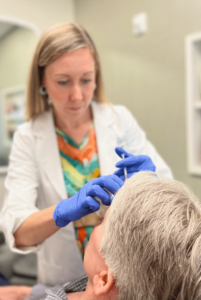

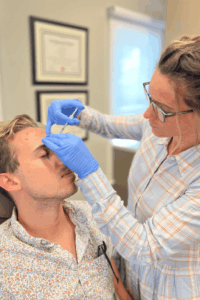
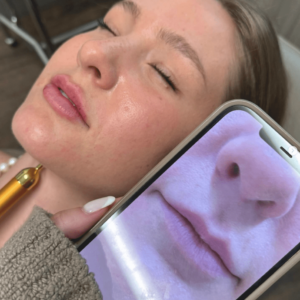
Dr. Kulbersh explains the difference between upper and lower blepharoplasties:
Our Approach to Eyelid & Forehead Surgery
Your eyes are the most expressive feature of your face, requiring the highest level of surgical precision and aesthetic understanding. Dr. Kulbersh’s specialized training in oculoplastic surgery, combined with his facial plastic surgery expertise, ensures that every procedure enhances your natural beauty while preserving the unique character of your gaze. We focus on creating results that look refreshed and natural—never “operated on.”
Popular Eyelid & Forehead Combinations
Learn the secret to creating a long-lasting brow lift:
Meet Dr. Jonathan Kulbersh
Dr. Kulbersh’s specialized fellowship training in oculoplastic surgery under Dr. Guy Massry in Beverly Hills and provides him with unparalleled expertise in plastic surgery. His understanding of the delicate anatomy around the eyes, combined with his artistic approach to facial surgery, ensures that every procedure enhances your natural beauty while maintaining your unique character.
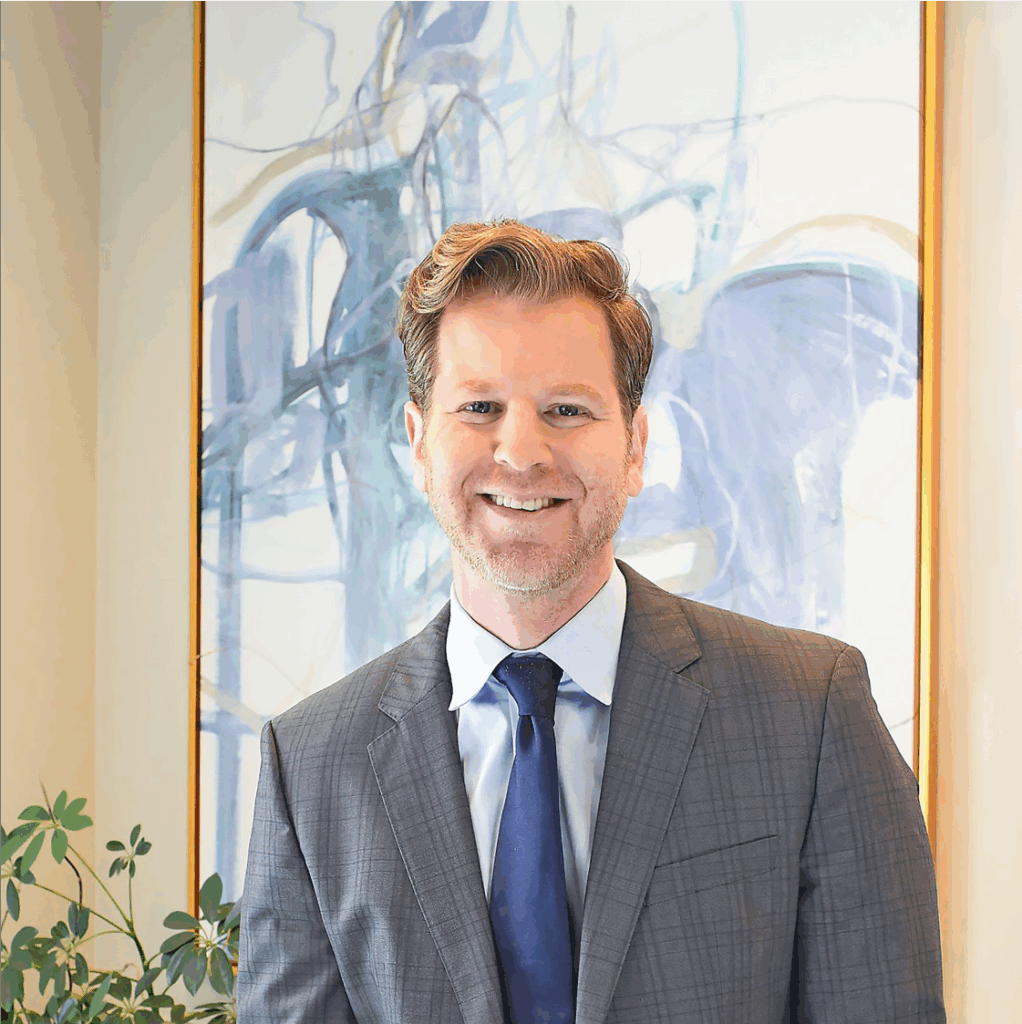

Your Eye & Forehead Surgery Journey
FAQ
What's the difference between upper and lower blepharoplasty?
Upper blepharoplasty addresses excess skin, muscle, and fat in the upper eyelids that can make you look tired or aged. Lower blepharoplasty targets under-eye bags, puffiness, and loose skin in the lower eyelid area. Dr. Kulbersh offers two primary approaches for lower blepharoplasty: fat removal with fat grafting to the under-eye area (often combined with chemical peels), or fat repositioning with or without additional fat grafting. The choice depends on your specific anatomy and desired outcome. Many patients benefit from both upper and lower procedures for complete eye rejuvenation.
How do I know if I need a brow lift or upper blepharoplasty?
The distinction depends on where the primary problem lies. If your eyebrows have dropped and are creating a heavy appearance over your eyes, a brow lift may be the better solution. If the issue is mainly excess upper eyelid skin with normal brow position, upper blepharoplasty is typically recommended. Sometimes both procedures are needed. Dr. Kulbersh will perform a detailed analysis during consultation to determine the best approach.
Will eye surgery leave visible scars?
Dr. Kulbersh uses advanced surgical techniques to minimize scarring. Upper blepharoplasty incisions are placed in the natural eyelid crease, making them virtually invisible once healed. Lower blepharoplasty can often be performed through a transconjunctival approach (inside the eyelid) when only fat repositioning is needed, leaving no external scars. When skin removal is necessary, incisions are placed just below the lash line and heal very well with proper care.
How long does recovery take for eye surgery?
Most patients return to work and normal activities within 7-10 days after blepharoplasty. Initial swelling and bruising typically peak around day 3-5 and gradually improve over 2-3 weeks. You can usually wear makeup after about one week to cover any residual bruising. Strenuous exercise should be avoided for 3-4 weeks. Full healing and final results are typically seen at 3-6 months.
Can blepharoplasty improve my vision?
Yes, upper blepharoplasty can improve vision if excess upper eyelid skin is obstructing your field of vision. This condition, called ptosis or dermatochalasis, can make activities like reading or driving more difficult. When performed for functional reasons, upper blepharoplasty may be covered by insurance. We can perform visual field testing to document functional impairment if needed.
What are the different approaches to lower blepharoplasty?
Dr. Kulbersh offers two main techniques for lower blepharoplasty based on your individual needs. The first approach involves removing excess fat and performing fat grafting to the under-eye area, often combined with a chemical peel for comprehensive rejuvenation. The second technique uses fat repositioning, where existing fat is moved to fill hollow areas, with or without additional fat grafting. During your consultation, Dr. Kulbersh will assess your anatomy and recommend the best approach to achieve natural, long-lasting results.
What's the difference between a brow lift and Botox for forehead lines?
Botox temporarily relaxes muscles that cause dynamic wrinkles and can provide a subtle brow lift effect, but it doesn’t address excess forehead skin or significantly low brow position. A surgical brow lift provides permanent repositioning of the brows and can remove excess forehead skin for more dramatic, long-lasting results. Many patients use Botox for maintenance after brow lift surgery.
Am I too young for eye surgery?
There’s no specific age requirement for eye surgery—it depends on your individual anatomy and concerns. Some patients develop under-eye bags or excess upper eyelid skin in their 30s due to genetics, while others may not need surgery until much later. The key is having realistic expectations and sufficient changes to warrant surgery. Non-surgical options may be more appropriate for younger patients with minor concerns.
How long do eye surgery results last?
Eye surgery results are typically very long-lasting. Upper blepharoplasty results often last 10-15 years or more, as the excess skin that’s removed doesn’t grow back. Lower blepharoplasty results can be permanent for fat repositioning. Brow lift results typically last 8-12 years. The aging process continues, but you’ll always look younger than if you hadn’t had the procedure.
Can I wear contact lenses after eye surgery?
You’ll need to avoid contact lenses for about 2 weeks after eye surgery to allow proper healing. Your eyes may be dry and sensitive initially, making contacts uncomfortable anyway. We recommend having a current pair of glasses available for this period. Once cleared by Dr. Kulbersh, you can gradually resume contact lens wear as your comfort allows.
What are the risks of eye and forehead surgery?
While complications are rare when performed by an experienced oculoplastic surgeon, potential risks include bleeding, infection, scarring, dry eyes, temporary or permanent changes in sensation, asymmetry, or unsatisfactory results requiring revision. Specific to eye surgery, there’s a small risk of difficulty closing the eyes completely if too much skin is removed. Dr. Kulbersh’s specialized training, experience, and accredited surgical center minimizes these risks through conservative, precise techniques.
Can eye surgery be combined with other facial procedures?
Yes, eye surgery is frequently combined with other facial procedures like facelifts, neck lifts, or facial fat grafting for comprehensive facial rejuvenation. Combining procedures can be more efficient and cost-effective. However, we always prioritize safety and ensure you’re a good candidate for combined surgery. Recovery time may be extended when multiple procedures are performed together.
How do I prepare for eye surgery?
Pre-operative preparation includes stopping blood-thinning medications and supplements, arranging post-operative care, and following specific instructions. You’ll need to remove contact lenses before surgery and have glasses available for recovery. Smoking should be stopped at least 4 weeks before surgery. We’ll provide detailed pre-operative instructions and eye drops to use before and after surgery.
Will I look different after eye surgery?
The goal of expertly performed eye surgery is to make you look like a younger, more refreshed version of yourself—not different. Dr. Kulbersh’s conservative approach preserves your natural eye shape and expression while addressing aging concerns. Most people will notice that you look well-rested and refreshed, but won’t be able to tell you’ve had surgery.
What's the difference between a traditional brow lift and an endoscopic brow lift?
Traditional brow lifts use longer incisions across the forehead or at the hairline, providing maximum lifting capability but with longer scars. Endoscopic brow lifts use several small incisions hidden in the hair and an endoscope (tiny camera) to lift the brow with minimal scarring. The choice depends on your anatomy, degree of lift needed, and hairline position. Dr. Kulbersh will recommend the best technique for your specific needs.
Can non-surgical treatments replace eye surgery?
Non-surgical treatments like dermal fillers, laser resurfacing, or radiofrequency treatments can improve some eye area concerns, particularly fine lines, mild volume loss, or skin texture. However, they cannot remove significant excess skin or fat deposits. For drooping upper eyelids or prominent under-eye bags, surgery typically provides superior and longer-lasting results. Many patients combine surgical and non-surgical approaches for optimal outcomes.
How soon can I wear eye makeup after surgery?
Generally, you can resume eye makeup about one week after surgery, once the sutures are removed and Dr. Kulbersh clears you. Start with gentle, hypoallergenic products and avoid waterproof formulas initially, as they require more aggressive removal. We recommend purchasing new eye makeup products to avoid introducing bacteria during the healing period.
What should I expect immediately after eye surgery?
Immediately after surgery, your eyes will be covered with ointment and possibly ice packs to reduce swelling. Vision may be hazy from the ointment, and you’ll experience some discomfort, swelling, and bruising. Most patients describe the discomfort as mild to moderate and easily managed with prescribed pain medication. You’ll need someone to drive you home and assist you for the first 24-48 hours.
Can eye surgery fix asymmetry?
Eye surgery can often improve natural asymmetry, but perfect symmetry is not achievable since most people have some natural asymmetry. Dr. Kulbersh will assess your specific situation and discuss realistic expectations during consultation. Sometimes minor asymmetries become more noticeable after surgery as other issues are corrected, but significant improvements in balance and proportion are typically achieved.
Can lower blepharoplasty be combined with other treatments?
Absolutely. Lower blepharoplasty pairs exceptionally well with fat grafting to restore volume and chemical peels to improve skin texture and tone. This combination approach addresses multiple aspects of under-eye aging simultaneously. Other popular combinations include upper and lower blepharoplasty together, or combining eye surgery with brow lifts or non-surgical treatments like laser resurfacing for comprehensive facial rejuvenation.
How do I choose between surgery and non-surgical treatments for my eyes?
The choice depends on the severity of your concerns, your age, skin quality, and desired outcome. Non-surgical treatments work well for fine lines, mild volume loss, or skin texture issues. Surgery is typically better for significant excess skin, fat deposits, or functional concerns. During consultation, Dr. Kulbersh will show you what each approach can achieve and help you make the best decision for your goals and timeline.
What makes Dr. Kulbersh uniquely qualified for eye surgery?
Dr. Kulbersh completed specialized fellowship training in oculoplastic surgery under Dr. Guy Massry in Beverly Hills, focusing exclusively on surgery around the eyes. He has been voted best of the best facial plastics surgeons in Charlotte for 7 years in a row. He has been in practice for over 13 years in Charlotte and has successfully performed these procedures thousands of times. This advanced training, combined with his double board certification in facial plastic surgery, provides him with unparalleled expertise in eye and forehead procedures. His understanding of both functional and aesthetic aspects of eye surgery ensures optimal results.
Can I have eye surgery if I have dry eyes?
Having dry eyes doesn’t automatically disqualify you from eye surgery, but it requires careful evaluation and management. Dr. Kulbersh will assess the severity of your dry eye condition and may recommend treatment before surgery to optimize your healing. In some cases, surgical techniques can be modified to minimize the impact on tear production. Proper pre and post-operative dry eye management is essential for optimal results.
